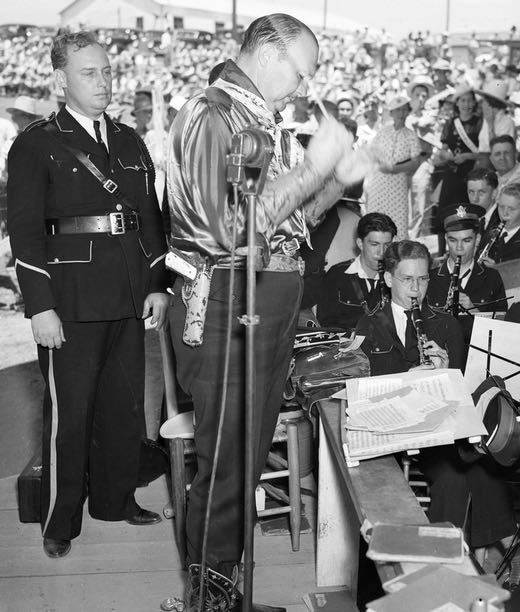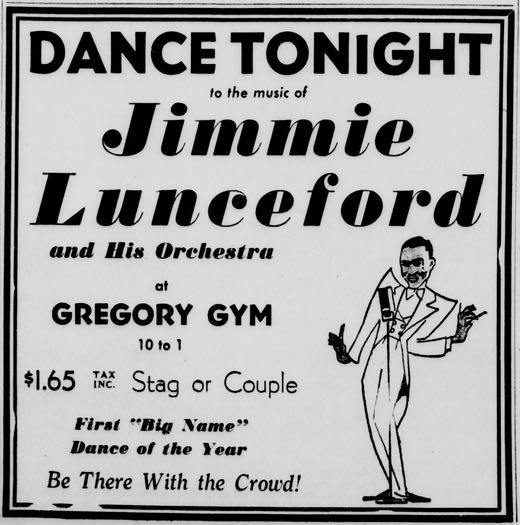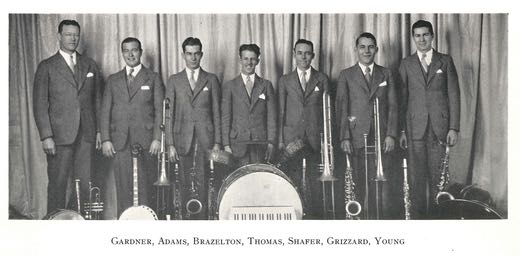Popular Music in Austin
 Paul Whiteman and Duke Ellington, 1936Two of the most well-known bandleaders in the country visited the Texas capital in 1936, highlighting a great deal about pop music and segregation in Austin.Read more…
Paul Whiteman and Duke Ellington, 1936Two of the most well-known bandleaders in the country visited the Texas capital in 1936, highlighting a great deal about pop music and segregation in Austin.Read more… National BandsAustin hosted a surprising number of famous visiting big bands, orchestras, and jazz musicians during the Depression and World War II era.Read more…
National BandsAustin hosted a surprising number of famous visiting big bands, orchestras, and jazz musicians during the Depression and World War II era.Read more… Territory Music: Local BandsThe major popular music ensembles for public dances in Austin were territory bands, regional bands that created a unique Southwest lineage of jazz and dance music.Read more…
Territory Music: Local BandsThe major popular music ensembles for public dances in Austin were territory bands, regional bands that created a unique Southwest lineage of jazz and dance music.Read more…
In this instance, Popular Music denotes music made primarily in formal commercial spaces. “Formal” here means that the performance occurred in a public venue, institution, or mass communication medium. Examples of this would be theaters, night clubs, auditoriums, ballrooms, radio station, or recording studio.
“Commercial” further narrows the category to music made as part of the local or national musical economy, i.e. music being played for wages, a salary, or for promotion within the music industry.
Together, this category would include a dance orchestra playing at a small local club and a street musician playing on the radio, but it would not cover a jubilee choir performing in a formal institution like a Baptist Church or a fiddle band playing at an informal house party.
Music at house parties, for example, were certainly party of a wider, less formal commercial circuit and contributed considerably to popular music in broad sense. Here, however, we are trying to capture a narrower range of the mainstream commercial music industry and performance.
For this project, these categories—Popular Music and Vernacular Music—are not meant to be self-contained and exclusive of one another. There was a vibrant and dynamic overlap between them. The music covered in these instances in “popular” was almost always influenced and linked to vernacular music practices. The same is true for “vernacular” music—folk/vernacular music almost always absorbed the practices and idioms of the music industry from, at the very least, the last quarter of the 19th century through the 20th.
The use of these categories, instead of bringing all of this music into one giant umbrella category, is to recognize two streams of non-concert performance practices in American musical life that constantly interacted since the 19th century: one based in vernacular idioms and the other developed within the music industry.